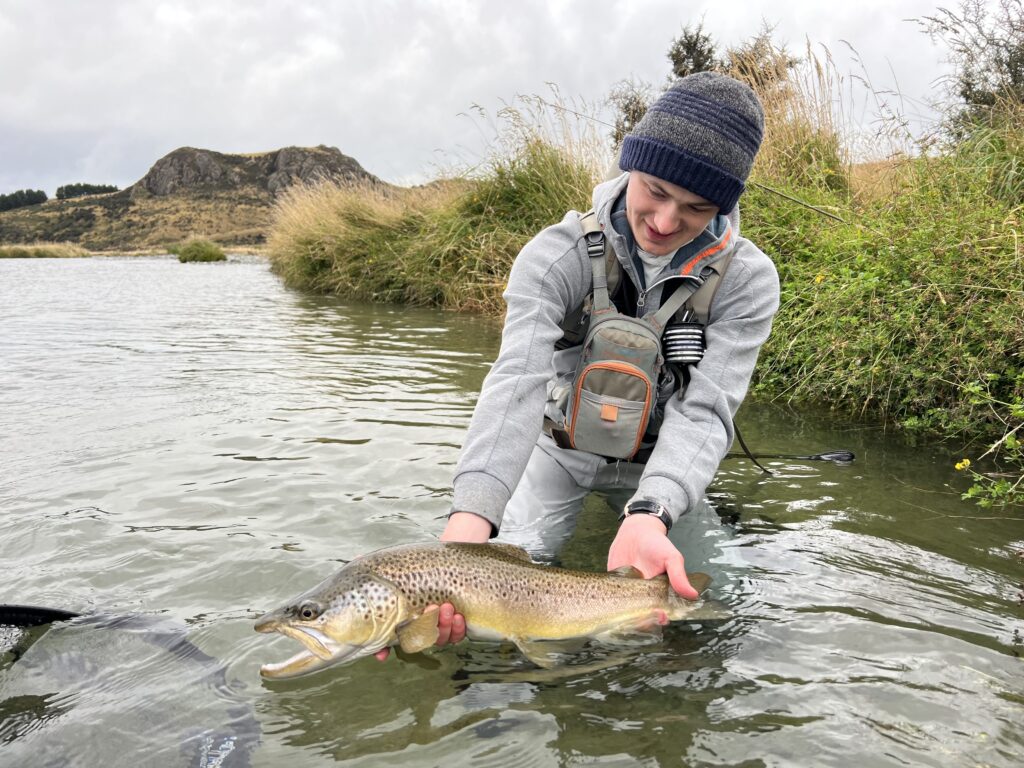To sight-fish for trout, you have to see them. Thanks for reading!
Sarcasm aside, catching a fish of any species that you’ve spotted beforehand has always been a preferred method for anglers. It involves strategy, position, and usually a damn good cast. However, one of the more overlooked (see what I did there?) aspects to this game is seeing your target in the first place.
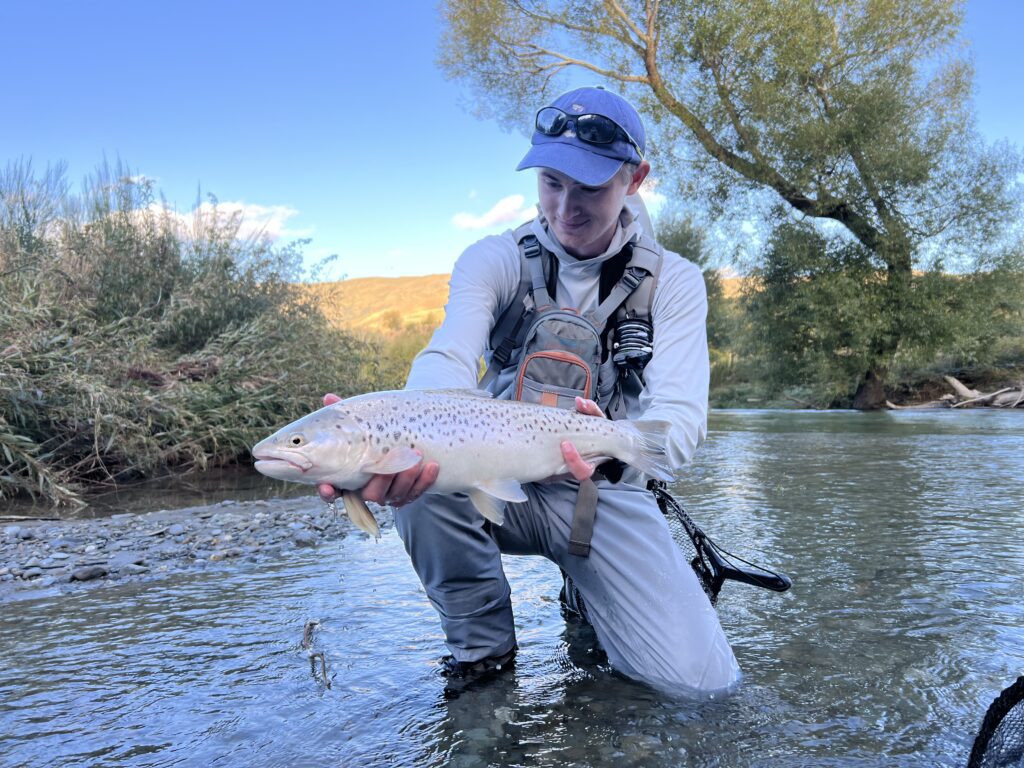

It’s been almost a year since I went to New Zealand. The trip was a massive success overall, but I’m still haunted by some of the fish that got away. Losing big trout is a product of fishing for mostly big trout, and by no means was I expecting to land every two-foot-plus brown I managed to stick. What gets to me just as much were the amount of other perfectly good shots I blew by just not seeing a fish in time. Since coming back to the States, I’ve been able to digest and apply much of what I picked up and merge it with a few other tricks from my years of domestic sight-fishing. Whether you’re on your local waters or the most technical sight-fishing streams in the world (or if these are one in the same), here’s a few general tips for staying one eye ahead of your quarry.
Be informed by your mistakes. Naturally if you’re not sure where trout are in a certain section of water, you’ll probably walk past a few holding areas and spook fish. That’s just part of the game. What you can do with these experiences is learn where these fish came from and keep similar spots in mind when looking for potential sight fishing targets. Trout didn’t happen to randomly be in those areas where they spooked. There’s a convenient reason, and the sooner you can recognize those patterns the quicker you’ll learn to look for fish in them.
Once you’ve identified good areas for spotting trout, the “sight” part of sight-fishing begins. Hope you’ve been eating your carrots.
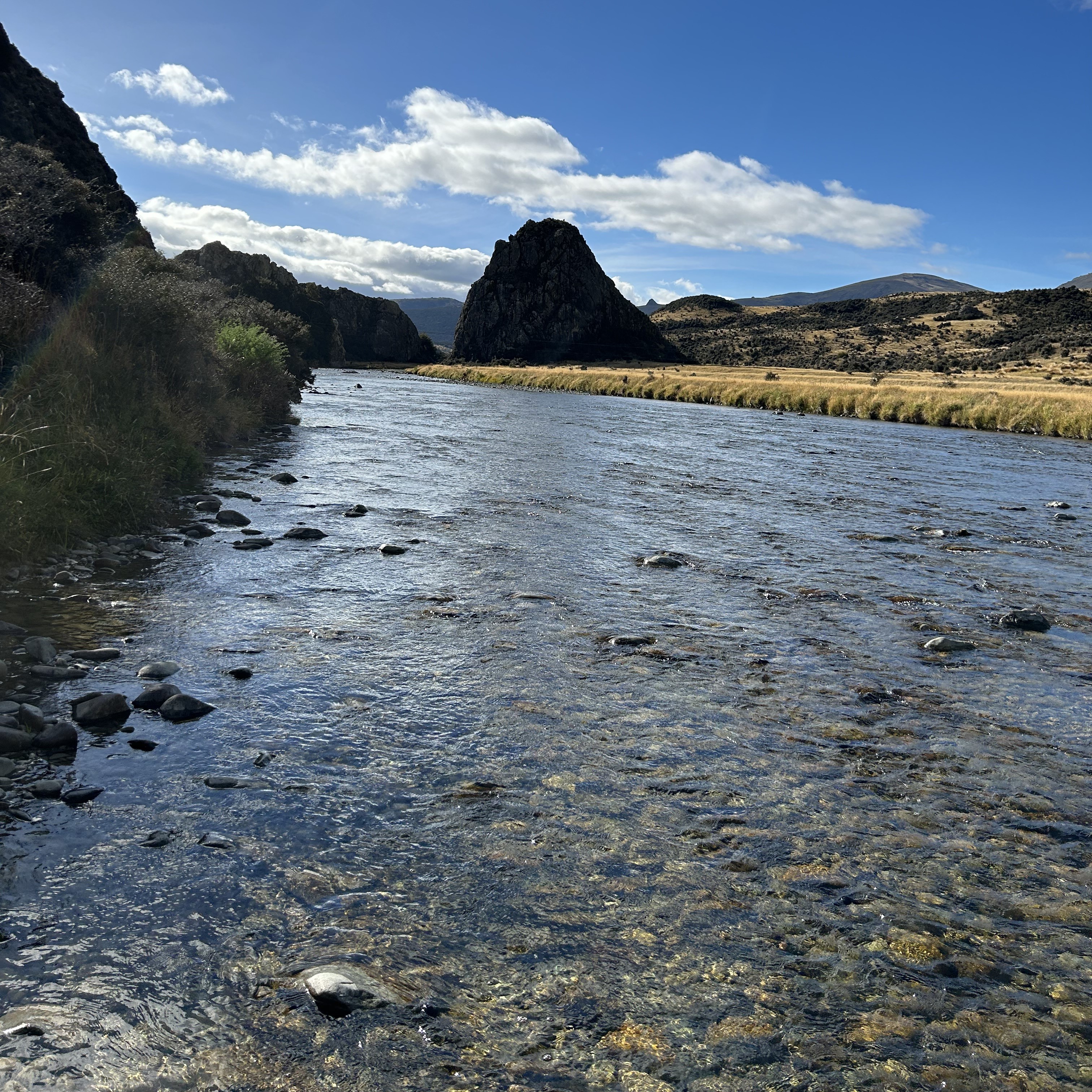

Sneaking up on fish must begin before you even know a fish is there. Depending on your location and the assumed fish’s line of sight, a stalk can take many forms. Walk slowly, army crawl, use bank features such as trees or rocks as cover, or do anything else that will conceal your movement into a good position to check out a piece of water. Fishing with a partner who can spot from further away and coach you into range can also be very helpful.
Know what to look for. Not every fish you see in a river will appear how they look in New Zealand. Hell, not even the fish in New Zealand show up how they’re supposed to in New Zealand. In an ideal situation your target fish might contrast perfectly with its surroundings and stick out well in crystal clear water, but this is usually not the case.
Trout have three main tells: their shape, color, and movement. It’s not often that all three give them away, but there are plenty of situations where one will. A color change can discern a fish from a cluster of fish-shaped rocks or a uniformly shaded bottom. The outline of a fish shows up surprisingly well among tons of structure that aren’t shaped like fish. In the right conditions, the shape of a fish will also double on the river bottom through its shadow.


Movement can be as obvious as a rise or as subtle as a gentle wiggle of the tail. You don’t always need to see an eat to figure out a fish’s location. Even the slightest movement can give it away. For example, imagine looking directly down at a streamer at the end of a swing. Although the fly is holding steady in the current and not moving horizontally or vertically, the flutter of materials like marabou or hackle are actually pretty easy to see. Current may not act on trout in the same way, but my point is trout in a similar position will still be moving enough to be noticed.
It’s also worth mentioning that you should use time when it’s on your side. If you’re likely to be spotted by a fish you may not have a chance to visually search a piece of water thoroughly, but when you can, do it. It’s best to go into technical sight-fishing situations with as much background information as you possibly can. This will avoid spooking unseen fish that can put down a whole pool, or even fish that were better targets than the trout you initially saw.
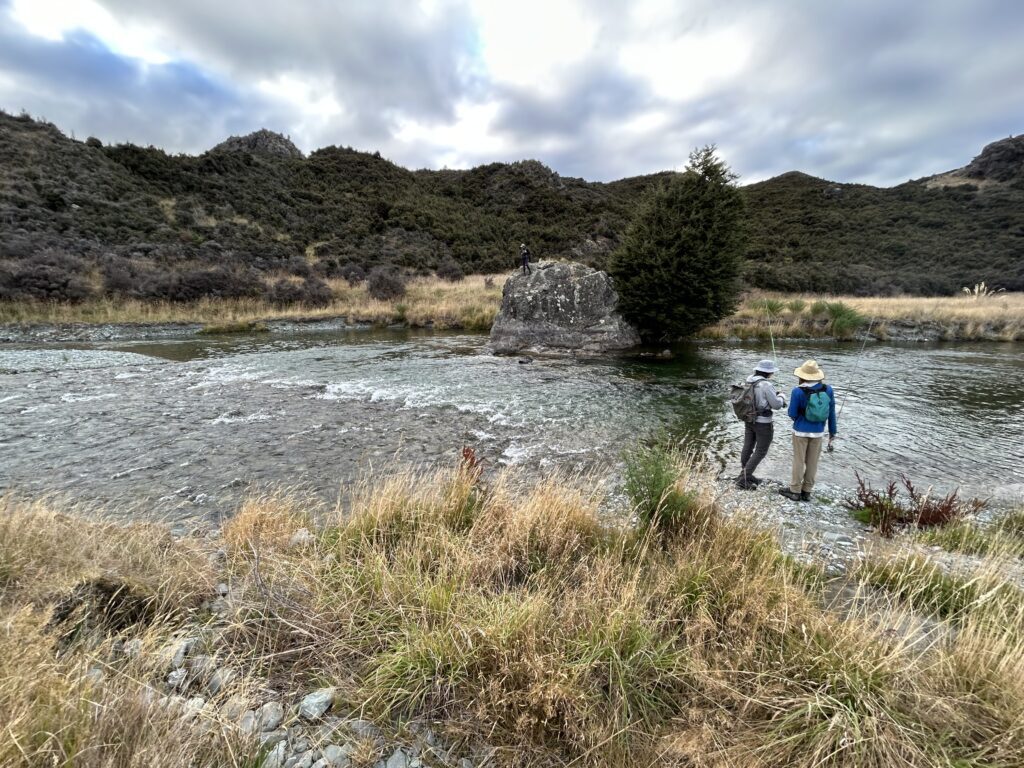

Read body language. Where I live in Oregon we have a famous river called the Metolius. It’s a large, primarily spring-fed stream that offers some of the best sight-fishing and dry fly challenges in the country. The Metolius also happens to be one of the few water bodies in the U.S. where you can legally target native bull trout. It’s pretty fun chasing these supersized char, and I do it pretty consistently. But man, do they get pressured. Turns out being a giant fish living in the clearest river in the state makes you a fly magnet. There are several runs on the river well known for holding good numbers of bull trout, and there are few days that the fish sitting in them don’t get targeted.
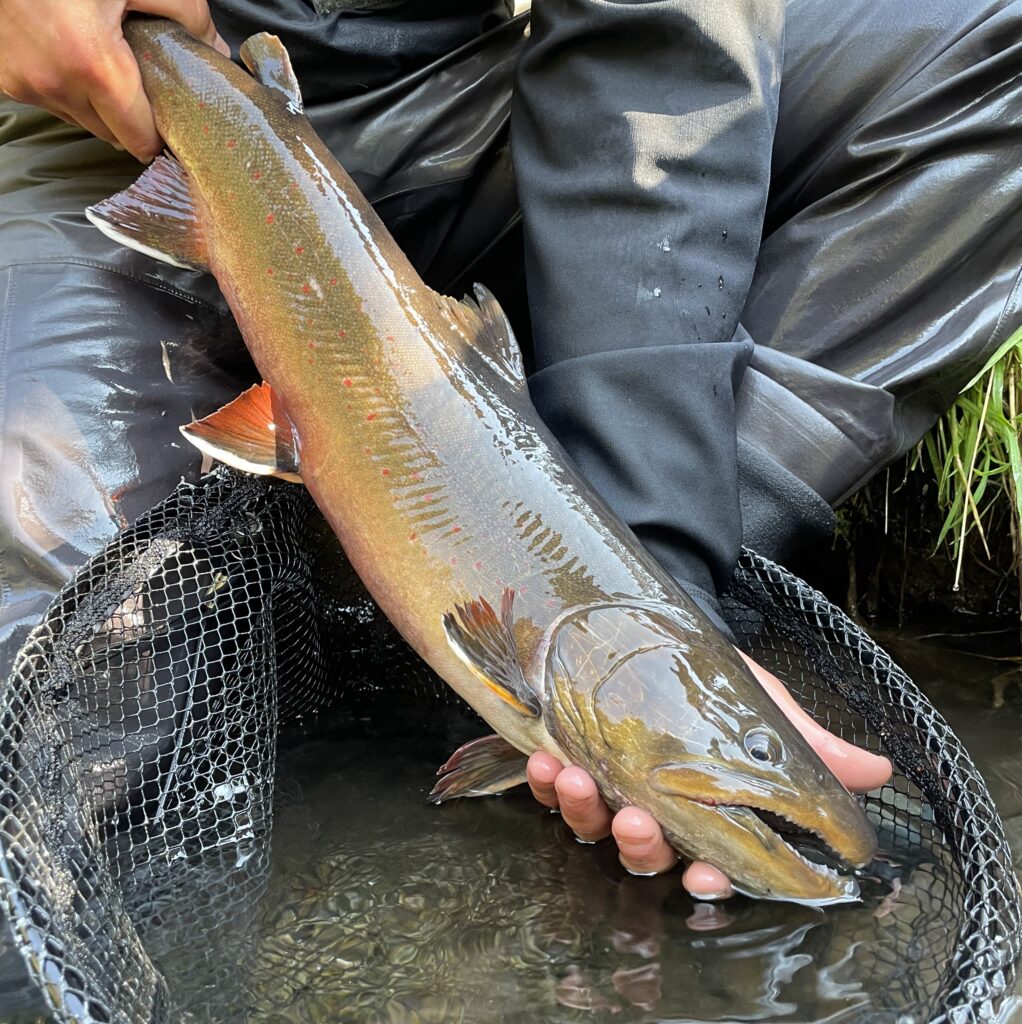

I’ll admit that when I first moved here I spent some time at those spots, but I’ve since moved on to others. One of the main reasons why was that the fish everyone can see and target are simply not as interested in eating. This is an example of an often forgotten tip of sight-fishing– Don’t fish to everything you can see.
A trout’s body language is the main separator between a fish you can target and a waste of your time. There are quite a few instances where you might be able to see a fish, but that fish isn’t necessarily on the feed. In the Metolius situation these fish are pressured, slightly spooked, and have seen a million flies. You’ll see this kind of behavior on any heavily fished section of water. Fish know you’re around and just don’t really care, and not in a good way. That’s not to say you can’t sometimes make a fish in these positions eat, since generating reaction/aggression strikes is a real strategy in fishing. If you walk up to a fish you can clearly see and it doesn’t do much to hide from you, it’s possible you’re dealing with one of those scenarios. Get ready to make the same cast over and over again.
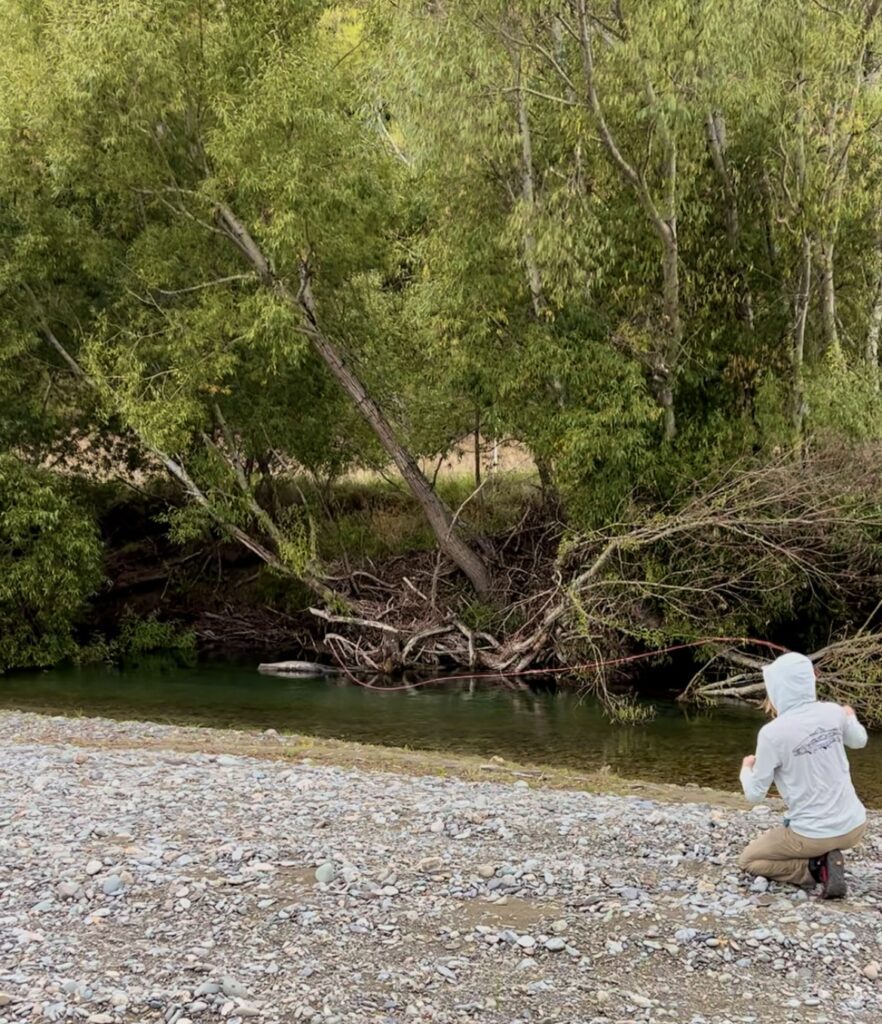

Other situations where you might see trout out in the open are when they’re spawning or because of certain water conditions. Trout may move to visible areas to find the best substrate for depositing eggs and are not there to find food. During summers in the Northeast, I’ve also come across trout that reveal themselves to get to thermal refuge when flows are low and temperatures are high. The best thing to do here is just leave the fish alone.
Sight fishing for trout can happen across a range of difficulties, but what remains a constant necessity in all scenarios is seeing fish, and the right one at that. Take a little time to ensure the odds are in your favor and I can guarantee the number and quality of shots you have will increase.
